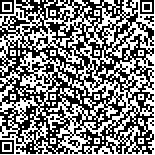| Quote
: |
姚昆鹏,刘起立,石静,蔡子杰,蔡虎志,陈新宇.基于生物信息学及分子对接研究温阳振衰颗粒治疗慢性心力衰竭的潜在分子机制[J].湖南中医药大学学报英文版,2021,41(9):1365-1371.[Click to copy
] |
|
| |
|
|
| This paper
:Browser 3174times Download 1117times |
| 基于生物信息学及分子对接研究温阳振衰颗粒治疗慢性心力衰竭的潜在分子机制 |
| 姚昆鹏,刘起立,石静,蔡子杰,蔡虎志,陈新宇 |
| (湖南中医药大学, 湖南 长沙 410208;湖南中医药大学第一附属医院, 湖南 长沙 410007) |
| 摘要: |
| 目的 利用生物信息学方法及分子对接技术预测温阳振衰颗粒治疗慢性心力衰竭(chronic heart failure,CHF)的活性成分、作用靶点及相关生物学途径。方法 利用TCMSP、BATMAN-TCM数据库筛选温阳振衰颗粒的活性成分及药物潜在靶点,应用GeneCards、PharmGkb、TTD、DrugBank平台检索CHF的疾病靶点,采用Cytoscape 3.7.0软件构建“成分-靶点”网络图,运行STRING平台进行靶蛋白相互作用(protein-protein interaction,PPI)分析,运用R语言数据包进行基因本体功能富集(gene ontology,GO)与京都基因与基因组百科全书(Kyoto encyclopedia of genes and genomics,KEGG)富集分析,预测其作用机制,最后运用AutoDockVina和PyMol软件对温阳振衰颗粒中的关键活性成分与PPI中的核心蛋白进行分子对接验证。结果 共筛选温阳振衰颗粒有效成分145种,涉及靶标238个。“药物-成分-靶点”图中筛选出关键活性化合物204个,其干预的PPI网络主要涉及PTSG2、ESR1、CALM3等核心蛋白,GO及KEGG富集分析结果显示温阳振衰颗粒干预慢性心力衰竭主要涉及氧化应激反应、Ca2+稳态调节、细胞内能量转运等多种生物学途径以及MAPK信号通路、p53信号通路、PI3K-Akt信号通路等相关通路。分子对接验证提示槲皮素与核心靶蛋白JUN结合情况最佳,JUN是温阳振衰颗粒中关键化学成分结合活性最优的靶蛋白。结论 温阳振衰颗粒中槲皮素、豆甾醇、山柰酚等多种关键有效成分可能作用于JUN、MAPK3、STAT3等多种核心靶蛋白,发挥干预CHF的药理作用。 |
| 关键词: 温阳振衰颗粒 慢性心力衰竭 生物信息学 分子对接 分子机制 |
| DOI:10.3969/j.issn.1674-070X.2021.09.010 |
| Received:May 17, 2021 |
| 基金项目:国家自然科学基金资助项目(81704061,81173213);湖南省科学技术厅重点领域研发计划(2019SK2321);湖南省科技人才托举工程项目(2020TJ-N01);湖南省发改委创新引导专项(湘发改投资2019-412号);湖南省中医药管理局心病“四时调阳”重点研究室建设专项;湖南省中医学“双一流”学科建设项目。 |
|
| Mechanism of Wenyang Zhenshuai Granule in Treatment of Chronic Heart Failure Based on Network Pharmacology and Molecular Docking |
| YAO Kunpeng,LIU Qili,SHI Jing,CAI Zijie,CAI Huzhi,CHEN Xinyu |
| (Hunan University of Chinese Medicine, Changsha, Hunan 410208, China;The First Affiliated Hospital of Hunan University of Chinese Medicine, Changsha, Hunan 410007, China) |
| Abstract: |
| Objective Bioinformatics method and molecular docking technology were used to predict the active components, targets and related biological pathways of Wenyang Zhenshuai Granule in the treatment of chronic heart failure (CHF). Methods TCMSP and BATMAN-TCM database were used to screen the active components and potential drug targets of Wenyang Zhenshuai Granule. GeneCards, PharmGkb, TTD and DrugBank platforms were used to search the disease targets of CHF. Cytoscape 3.7.0 software was used to construct the "component-target" network diagram. STRING platform was used to analyze the protein-protein interaction (PPT). R language data package was used to enrich gene ontology (GO) function and Kyoto encyclopedia of genes and genomes (KEGG) to predict its mechanism. AutoDockVina and PyMol software were used to verify the molecular docking of key active components in Wenyang Zhenshuai Granule and core proteins in PPI. Results A total of 145 effective components of Wenyang Zhenshuai Granule were screened, involving 238 targets. A total of 204 key active compounds were screened out from the "drug-component-target" diagram. The PPI network intervened mainly involves core proteins such as PTSG2, ESR1 and CALM3. GO and KEGG enrichment analysis results showed that the intervention of Wenyang Zhenshuai Granule on CHF mainly involved multiple biological pathways such as oxidative stress response, Ca2+ homeostasis regulation, intracellular energy transfer, and MAPK signaling pathway, P53 signaling pathway, PI3K-Akt signaling pathway. Molecular docking verification showed that quercetin had the best binding with the core target protein JUN, and JUN was the target protein with the best binding activity for the key chemical components in Wenyang Zhenshuai Granule. Conclusion Quercetin, stigmasterol, kaempferol and other key active ingredients in Wenyang Zhenshuai Granule may act on JUN, MAPK3, STAT3 and other core target proteins, and play a pharmacological role in the intervention of CHF. |
| Key words: Wenyang Zhenshuai Granule chronic heart failure bioinformatics molecular docking molecular mechanism |
|

二维码(扫一下试试看!) |
|
|
|
|


